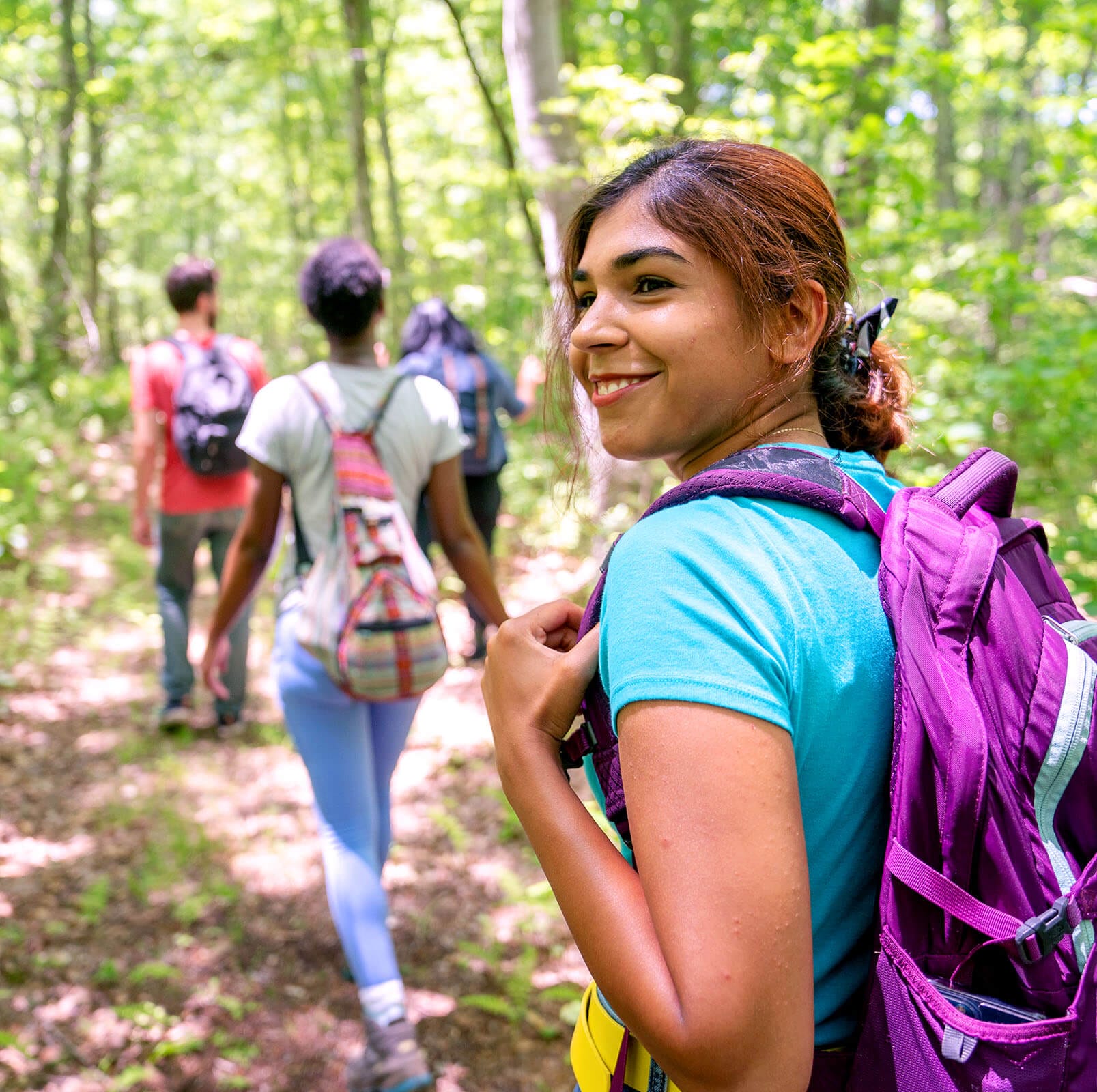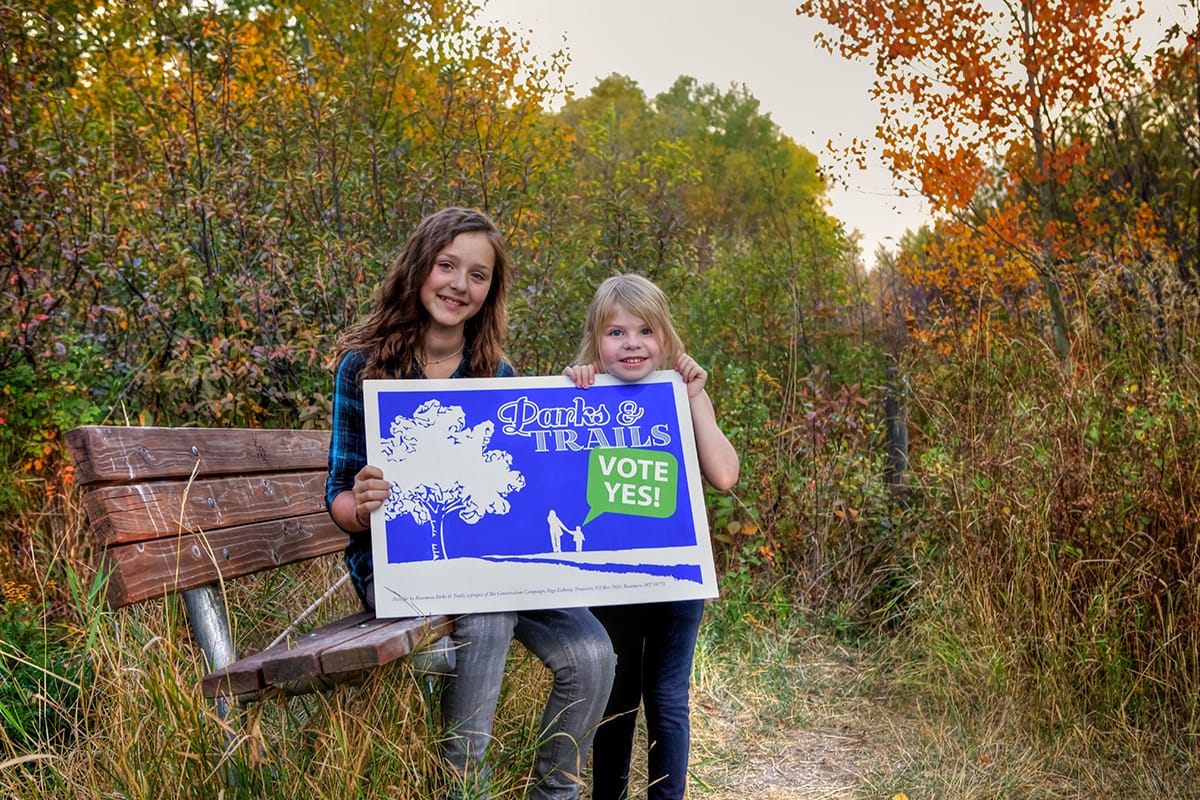When you get your ballot every election season, do you ever wonder how those various park and conservation questions get there? In most cases, the process is a long and winding road, full of bumps and surprises. But when ballot issues are thoughtfully designed and well-supported by data and subject-matter expertise, they stand a good chance of passing. How good? If you consider those that Trust for Public Land creates and supports, it’s about 83 percent.
We’ve achieved this high rate of passage by working closely with state and local governments and other partners to understand communities’ park and conservation needs and opportunities, identify the most-appropriate funding mechanisms—such as property taxes, a bonds, sales taxes, or others— gauge voter attitudes through public opinion research, and develop proposals that align with voters’ values and pocketbooks.
As TPL celebrates our 50th anniversary, here’s a look back at some of our most notable and pivotal wins.
Rising temperatures, bigger storms, and asphalt schoolyards pose significant risks during recess. Urge Congress to prioritize schoolyards that cool neighborhoods, manage stormwater, and provide opportunities for kids to connect with nature today!
-
The Genesis of Our Conservation Finance Methodology
High crime in both Miami-Dade County, Florida, and Los Angeles County, California, were top concerns for voters in the mid-1990s. So was the lack of adequate open space. More public parks and recreation opportunities provided a two-pronged solution.
Trust for Public Land spearheaded efforts in both counties to understand and leverage polling data, draft smart and appealing ballot language, and apply best practices for campaign messaging.
A “Safe Neighborhood Parks Act” appeared on the ballot in each county. In Miami-Dade County, the $200 bond referendum passed with 67 percent of the vote. On the other side of the country, 65 percent of voters approved L.A. County’s Prop A, a $319 million “benefit assessment,” which, according to the California Senate Governance and Finance Committee “localizes the cost of public improvements and activities by charging only property owners for what specifically enhances their land and buildings.”
These two measures marked the beginning of Trust for Public Land’s Conservation Finance program and became the models for our approach to this work.
-
The Time We Created a Model for Statewide Park Funding
As far back as the 1980s, Massachusetts communities began to see and feel the effects of development chipping away at historic character, agricultural economies, and affordable housing. For the next two decades, lawmakers sought legislative solutions to pair land conservation with affordable housing and historic preservation.
In the late 1990s, Trust for Public Land led a large Massachusetts coalition to pass the Community Preservation Act (CPA), which gives municipalities the authority to raise revenue with a local property tax. Cities and towns that adopt CPA are automatically eligible for state matching funds that address parks, conservation, affordable housing, and historic preservation.
Known as enabling legislation, the CPA allows cities and towns to exercise control over how to raise and spend funds for community preservation. As of 2022, TPL has helped 194 communities in Massachusetts adopt CPA, generating over $2.9 billion for open space, parks, affordable housing, and historic preservation. Other states have used CPA as a model.
-
The First Campaign Tying Public Health to Open Space
When healthcare officials in Eugene, Oregon, set out to improve residents’ physical and mental health, they knew exercise and exposure to nature were key. So, they turned to Trust for Public Land. Together, we developed the first open-space campaign to highlight the link between outdoor access and public health. Since 2006, when voters passed the $27 million general-obligation bond, Eugene has leveraged more than $15 million dollars in matching funds to buy land. They’ve added over 1,200 acres of natural areas and athletic fields to their park system.
-
The Gold Standard — Minnesota’s Constitutional Amendment
A state constitutional amendment is more secure than state or local laws, which are vulnerable to shifts in political winds, and are the best way to safeguard state funding for land and water conservation. In 2008, Trust for Public Land helped wage a successful campaign to design legislation, secure approval from the state legislature, and then educate Minnesota voters to pass the Clean Water, Land, and Legacy Amendment, the largest state land conservation ballot measure at the time.
By raising the state sales tax by 3/8 of 1 percent over a 25-year period, the state expected to generate $5.3 billion for clean water, outdoor heritage, parks and trails, and arts and cultural heritage.
-
The Local Park Project That Launched a $15 Million Bond
In Bozeman, Montana, thanks in large part to Trust for Public Land’s land protection staff, residents knew and believed in the potential of a 60-acre lot on the outskirts of town. And they had a strong vision for what Story Mill Community Park could be—a signature green space with trails, community gardens, a dog park, a hillside amphitheater, an adventure playground, a climbing boulder, and a nature sanctuary.
But that came with a hefty price tag. Showcasing the synergy between TPL’s Conservation Finance, land protection, and parks teams, we rallied voters behind a $15 million Parks & Trails Bond measure in 2012. It passed with 73 percent of the vote. A portion of the money funded the park’s land acquisition, design, and construction, which was completed in 2019. The rest of the bond money went toward an athletic complex, trails, and other park amenities in the city.
-
A One-Two Punch
The Gateway Arch is the most iconic symbol in the St. Louis region. Together, the Gateway Arch National Park and the Great Rivers Greenway network of regional trails and parks provide both outdoor access to the area’s residents and visitors and generates significant economic activity for both states.
In 2000, TPL’s Conservation Finance team achieved a first when, in an unusual regional legislative effort, it worked to pass Proposition C in four counties two states, and the City of St. Louis. The measure created local sales taxes that fund two new park districts, including the Great Rivers Greenway in Missouri.
In 2013, voters approved TPL-backed Proposition P, a sales tax increase expected to raise $31 million to fund, among other park and trail efforts, improvements to the grounds of the Gateway Arch. Part of the funding constructed a new park on top of a highway, directly linking the Gateway Arch to downtown St. Louis and helping to revitalize St. Louis’ downtown. Proposition P was a rare measure that created local funding to improve a National Park.
-
Making History
After leading the nation in funding for land conservation between 1990 and 2008, Florida abruptly turned off the spigot. In 2009, amidst the Great Recession, land conservation was zeroed out of the state budget. But in 2012, Trust for Public Land saw an opening and, in a dramatic expansion of our Conservation Finance ambitions, embarked on a bold campaign to amend the state constitution to create the largest state-level conservation funding initiative in U.S. history.
Leading the charge on the initiative petition and ballot measure campaign, TPL raised $3.5 million to qualify the measure for the November 2014 ballot, managing five offices and 15 staff around the state in order to gather nearly 1 million petition signatures to put Amendment 1 on the ballot. Known as the Water and Land Conservation Amendment, it dedicated one-third of the state’s real-estate transfer tax revenue to land conservation, restoration, and management for 20 years. The measure passed overwhelmingly at 75 percent and garnered more votes—4.2 million—than any candidate on the November 2014 ballot. It’s projected to generate $20 billion for conservation.
-
The Fruits of Sustained Focus and Commitment
New Jersey has faced tremendous development pressures in recent decades, and Trust for Public Land has worked tirelessly working to make conservation a priority for voters in the Garden State.
Every single country in New Jersey, and hundreds of municipalities, have created Open Space Trust Funds – dedicated coffers funded through local property taxes made possible through special state enabling legislation. Doing so allows municipalities and counties to leverage matching dollars from the state. The result: $12 billion for conservation across the state. In 2017, we celebrated a big victory when Monmouth County voters approved a 1.5-percent increase to the county’s Open Space Trust Fund.
-
The Path to Equity and Climate Resilience
Climate-change–related health impacts and increasing air pollution are leading to more asthma and cardiovascular disease in Denver. These impacts affect all residents, but rates among those living in historically disadvantaged communities are disproportionately higher.
Trust for Public Land, working with the Denver City Council and a large coalition of stakeholders, helped move Denver to the forefront of equitable climate action by working to pass the first-of-its-kind sales tax to dedicate funding for climate-change mitigation. Measure 2A will generate $40 million a year in perpetuity for the new Climate Protection Fund, financing priorities identified by the Denver Office of Climate Action, Sustainability and Resiliency. Half of the funds will be used in communities of color and under-resourced neighborhoods, those communities most affected by the adverse impacts of climate change.
The uniqueness, precedent, and progressiveness of Measure 2A set TPL on a clear path to push for ballot measures nationwide that focus on both climate and equity.
-
A National Model for County Conservation Funding
In an effort to protect important properties from development, including “the most critical land that maintains [the area’s] sense of place,” Beaufort County, South Carolina, voters established the Rural and Critical Lands Program. Since 2000, they’ve voted six times, including most recently in 2022, to maintain this important source of funding, resulting in $260 million for conservation.
Trust for Public Land helped identify properties for protection, creating “Greenprint” maps that use Geographic Information System technology to pinpoint where the conservation dollars would have the greatest impact. Trust for Public Land undertook feasibility research, commissioned polls, helped write ballot language, and coordinated ballot measure campaigns.
Trust for Public Land helped make the Rural and Critical Lands program a national model for conservation finance at the county level. The program underscores the importance of public education, both before and after voters go to the polls. For example, visitors to protected properties might see signs explaining that the view before them was preserved through the Rural and Critical Lands Program. Beaufort County has completed 121 land protection projects, conserving over 28,537 acres while leveraging tens of millions federal, state, and private dollars.
Lisa W. Foderaro is a senior writer and researcher for Trust for Public Land. Previously, she was a reporter for the New York Times, where she covered parks and the environment.


Connecting with nature strengthens our communities, improves public health, and brings us joy.
When you support us, you’re helping our Federal Affairs team advance policy and ballot measures at the national and local level that expand national parks, preserve cultural sites, fund conservation, and so much more.

